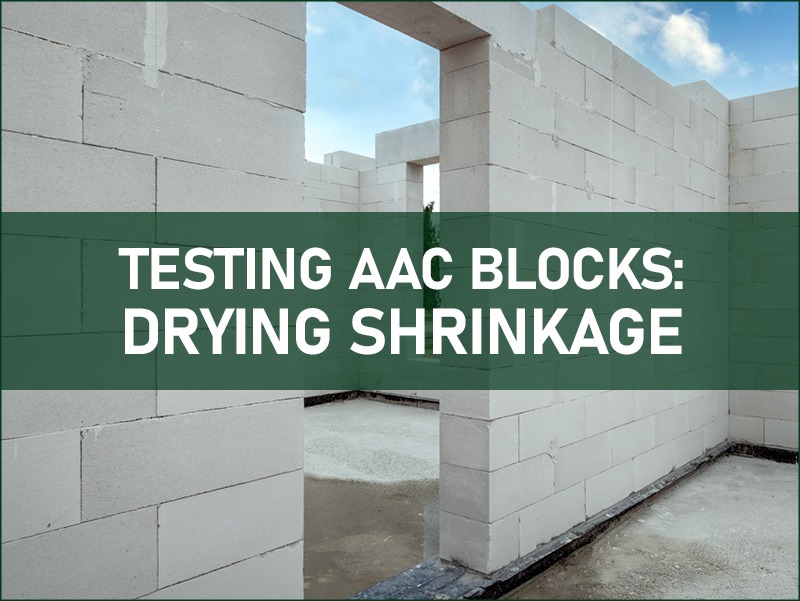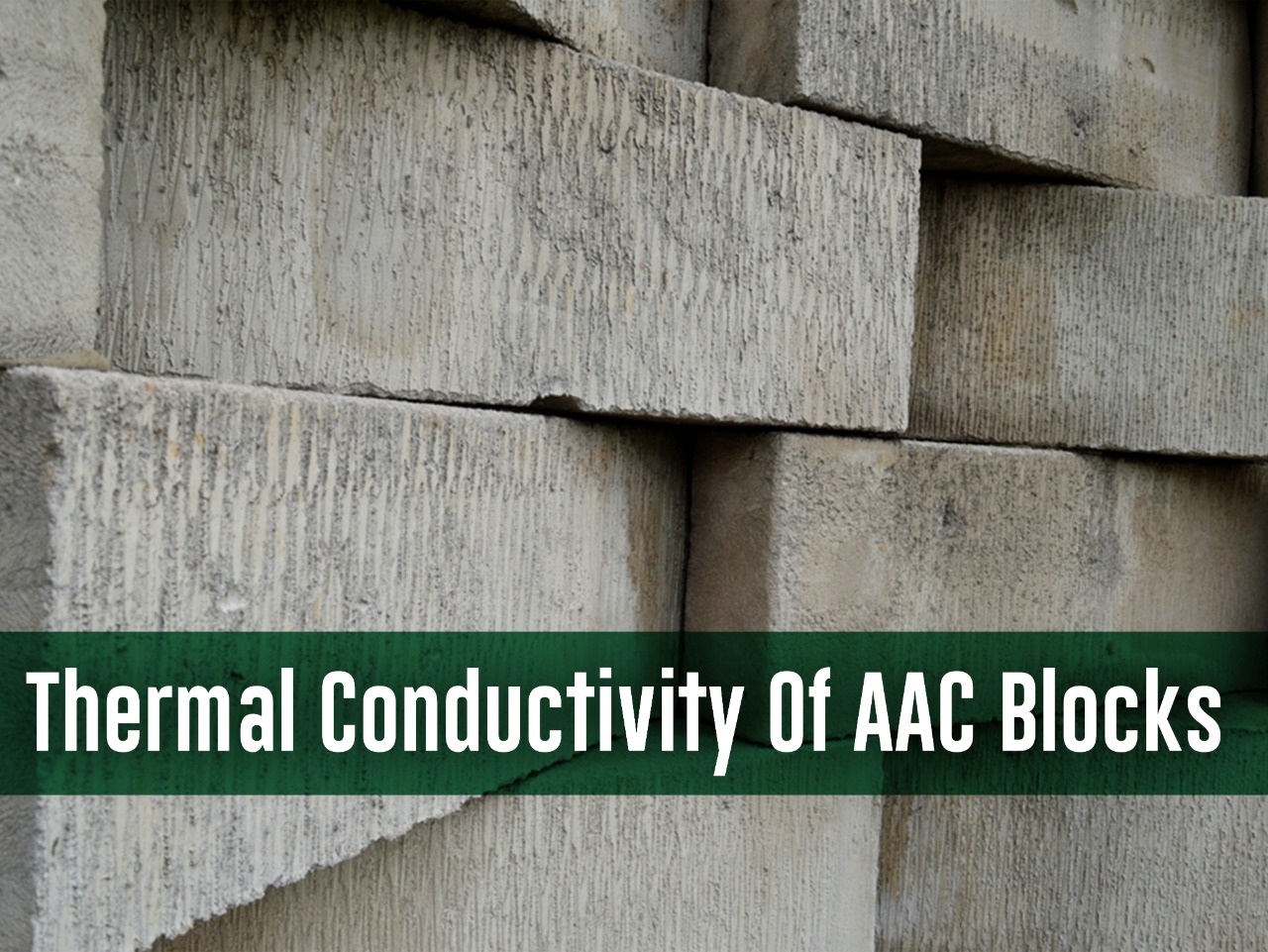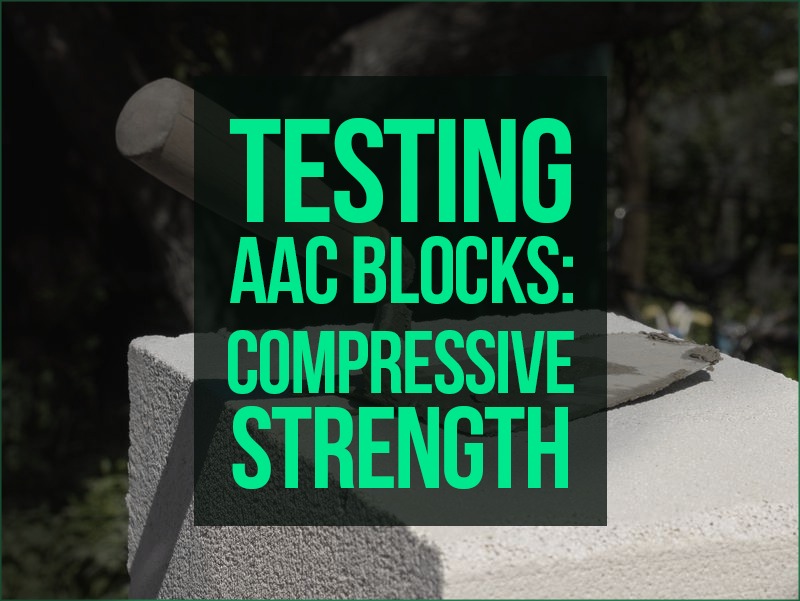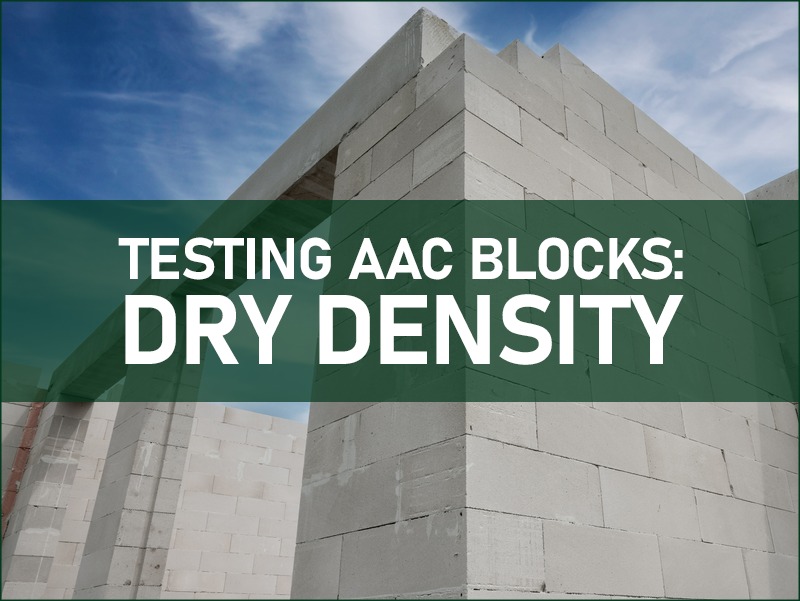
Testing AAC Blocks: Drying Shrinkage | Ecorex
Before we understand the test for drying shrinkage in AAC Blocks, we must know what drying shrinkage is. The loss of water from the concrete is termed 'Drying Shrinkage'. The drying shrinkage test for a concrete block aims to differentiate between critical and noncritical AAC blocks. In this test, the change in the size of the specimen blocks due to drying, from a saturated condition to an equilibrium condition, at 17% relative humidity is measured. The change in volume of the specimen due to shrinkage can be reduced by using filler materials such as fly ash, etc.
The drying shrinkage test is lengthy, the procedure of which forms a part of IS code 6441 (part 2). One of the most critical aspects of AAC blocks is their drying shrinkage as we know that the lesser the drying shrinkage the better the quality of the blocks. This means that the value of the drying shrinkage of an AAC Block is inversely proportional to its strength. So, the higher the strength, the lower will be the drying shrinkage of the block. This also means a lower possibility of having shrinkage cracks in the masonry wall.
The two grades of AAC Bocks specify the following- Grade 1 specifies that the drying shrinkage should not be more than 0.05% and Grade 2 specifies that the drying shrinkage value should not be more than 0.10%. The test of drying shrinkage is done carefully as it is crucial with these two aspects of Grade 1 and Grade 2 in mind. Let us read through the explanation of what code 6441 (part 2) says about the drying shrinkage test procedure.
- Apparatus: The following apparatus is required for the drying shrinkage test:
- Apparatus for Length Measurement: This is a very sensitive test and needs an extremely well-calibrated apparatus to measure the length of the specimen AAC Block. The measuring procedure is unique and thus it does not use the normal scale or a Vernier calliper. A specially designed apparatus is therefore used which can measure with an accuracy of 0.003 per cent of the length of the specimen. A key point to be remembered here is that this particular test measures the change in length of the specimen during drying.
Test Specimen:
Shape and size of Specimen: The drying shrinkage shall be determined by prisms of 40x40 mm cross-section and length suitable to the measuring apparatus (but NOT less than 150 mm).
The long axis of the prism specimen shall be -
A) Perpendicular to the direction of rise, if the height of the block is less than 24 cm.
B) Parallel to the direction of rise, If the height of the block is more than 24 cm.
A 10 mm deep hole shall be drilled centrally in each surface of the prism to permit the introduction of spherically shaped gauge plugs that fit in the measuring apparatus.
Apparatus:
Digital dial Gauge or any suitable measuring apparatus with an accuracy of 0.003 per cent may be used for the measurement of the length of the specimen.
- Gauge Plugs: It is a corrosion-resistant metal and is shaped in such a way that positive contact is ensured with the measuring device.
- Immersion Tank: A suitable container shall be provided for the complete immersion of the specimen in water. The temperature of the water must be 27 ± 2°c.
- Storage room or Humidity chamber: A suitable room shall be provided in which the specimens can be dried at 27 ± 2°c.
Procedure:
The prismatic specimen with gauge plugs at both ends shall be immersed in water till it attains a constant weight for not less than 72 hrs. Initially, the prism will rise to the surface if its bulk density is below 1 g/cm3, and absorb water but after 2 hrs the specimen is weighted down for complete immersion for the remaining 70 hrs or more if necessary.
Testing:
After removing the sample from the water, the length is measured within half an hour. The specimen shall always be placed on the measuring unit in the same position. After the first reading, a second reading shall be taken with the specimen turned 90 ° along its long axis. In case the two measurements differ the average of the two readings must be used. Repeated measurements of length shall be taken until the specimen has obtained constant reading - it may require 72 hrs or more, up to 7 days.
Drying Shrinkage is calculated by
S=[(L1-L2)/L]*100
Where, S = Drying shrinkage
L1 = First reading
L2 = final reading after the constant length
L = Original Length of the sample
Source - AAC Blocks For Superior Masonry Construction By Mukund Joshi
Recent blogs

Thermal Conductivity Of AAC Blocks | U value and R value | ECOREX
AAC blocks were invented for keeping the building thermally insulated and keeping the heat out from the building. Let's dig deep into Thermal Conductivity of AAC Blocks.

Top 5 AAC Block Manufacturers In India
Here is a list of the top 5 AAC block manufacturers in India. Because as a property owner, it is advised to have a working knowledge of different AAC block manufacturers.

Testing AAC Blocks: Compressive Strength | Ecorex
One of the most important characteristics of AAC blocks for the user is their compressive strength. Drying Shrinkage, Dry Density, as well as Compressive Strength, have different test procedures. Let's find out more together.

Testing AAC Blocks: Dry Density | Ecorex
Most of the popularity that AAC blocks have gained over the years is due to their unique characteristic of being lightweight. This is checked with the help of a dry density test.
